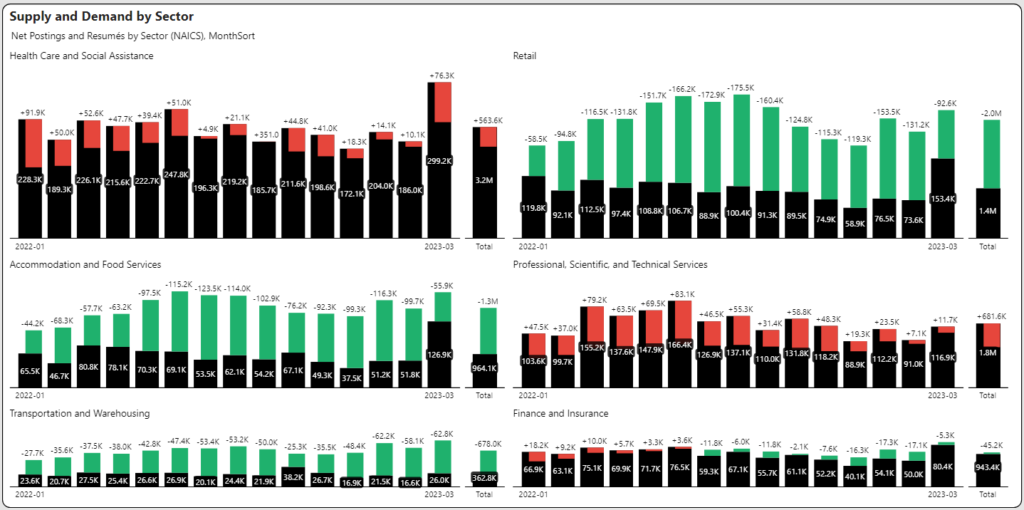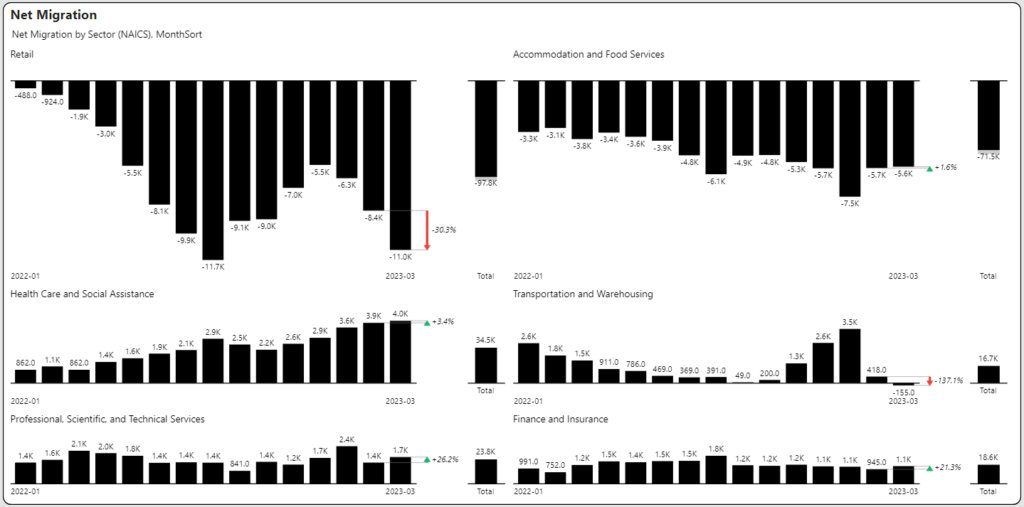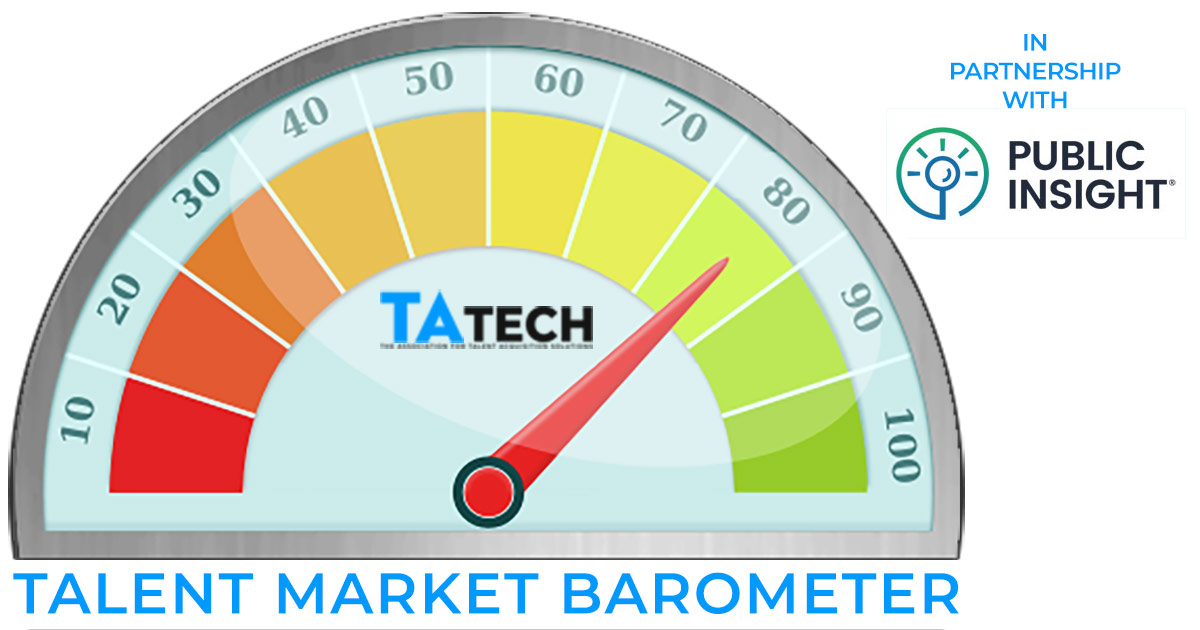A joint project of TAtech and Public Insight(R)
In Brief
The Talent Market Barometer is based on two metrics: the Supply-Demand Ratio and Net Migrations in the U.S. talent market. The Supply-Demand Ratio compares the number of job seekers with resumes to the net number of jobs posted in a select set of workforce sectors. Net Migrations measures the number of people with resumes entering or leaving those same sectors.
In March, the Supply-Demand Ratio and Net Migrations data indicate that the trend in the talent market is improving to a more favorable condition for recruiters. Our forecast for talent acquisition is then determined by the month-to-month direction of those two metrics – in this case, between February and March 2023. Based on that assessment, the current Barometer reading is for an Improving Market for Recruiters. Conditions may be different in your specific location or for your specific target talent cohorts.
What does a favorable Supply-Demand Ratio mean?
Among the six workforce sectors we monitor (which comprise approximately 50 percent of the U.S. working population, according to the U.S. Census Bureau), four of the sectors had more job seekers than job postings, indicating a favorable talent market for recruiters. This is the second consecutive month such a condition has occurred in the market and it did so despite a significant jump in the number of job postings in three of the sectors (Accommodation & Food Services, Finance & Insurance, Retail).
A favorable supply-demand ratio existed in the following sectors:
- Accommodation & Food Services
- Finance & Insurance
- Retail
- Transportation & Warehousing
There was an unfavorable Supply-Demand Ratio in:
- Healthcare & Social Assistance
- Professional, Scientific & Technical Services
The Finance & Insurance sector, which shifted from negative to positive February, continued in positive territory although the positive supply-demand ratio was smaller in March than it had been in February. In addition, March saw three of the sectors with a significant jump in job postings vs. two in February, but the supply-demand ratios declined in all three, indicating that while the market remained favorable for recruiters in March, it was less so than in February.

What does a favorable trend in Net Migrations mean?
In the six workforce sectors we monitor, four of the sectors had more people with resumes coming into the job market in March, which is a complete turn-around from the situation in February when four of the sectors actually had fewer people coming into the market. While the shifts were modest in two of the four sectors (Accommodation & Food Services and Healthcare & Social Assistance), the more active job seeker behavior overall represents a positive trend for recruiters.
Those sectors with a favorable net migration trend were:
- Accommodation & Food Services
- Finance & Insurance
- Healthcare & Social Assistance
- Professional, Scientific & Technical Services
Those with an unfavorable net migration trend were:
- Retail
- Transportation & Warehousing
The positive trend in this metric was driven by significantly more activity among job seekers with resumes in the Finance & Insurance and Professional, Scientific and Technical Services sectors, both of which saw increases of more than 20 percent. Offsetting that favorable trend, however, were significant declines in market-present job seekers in two sectors: Transportation & Warehousing, where net migration decreased by almost 55 percent, and Retail, where the decrease in net migration did slow but only by slightly more than 5 percent.

Our Forecast
Our forecast looks at the month-to-month changes in both the Supply-Demand Ratio and Net Migrations to forecast a talent market that is:
- Challenging for recruiters
- Deteriorating for recruiters
- Unchanged for recruiters
- Improving for recruiters
- Favorable for recruiters
The direction of the market from February to March 2023 is as follows for the six workforce sectors we monitor:
- Retail:
- Unchanged – Deteriorating market continued in March
- Accommodation & Food Services:
- Unchanged – Improving market continued in March
- Transportation & Warehousing:
- Unchanged – Deteriorating market continued in March
- Professional, Scientific & Technical Services:
- Changed – From Deteriorating to Improving market in March
- Finance & Insurance:
- Changed – From Deteriorating to Improving market in March
- Healthcare:
- Unchanged – Improving market continued in March
Based on these readings, our forecast is for an Improving Market for Recruiters.
Job Market Data & Analytics: Public Insight provides job market insights that optimize recruiting and career strategies and improve talent acquisition.
Public Insight acquires the market data used in the Barometer from Indeed and Glassdoor (Recruit Holdings) as well as select government publications and then analyzes it to produce a broad range of in-depth metrics. The resulting data set provides a targeted 70 percent proxy for the talent market in the U.S.

